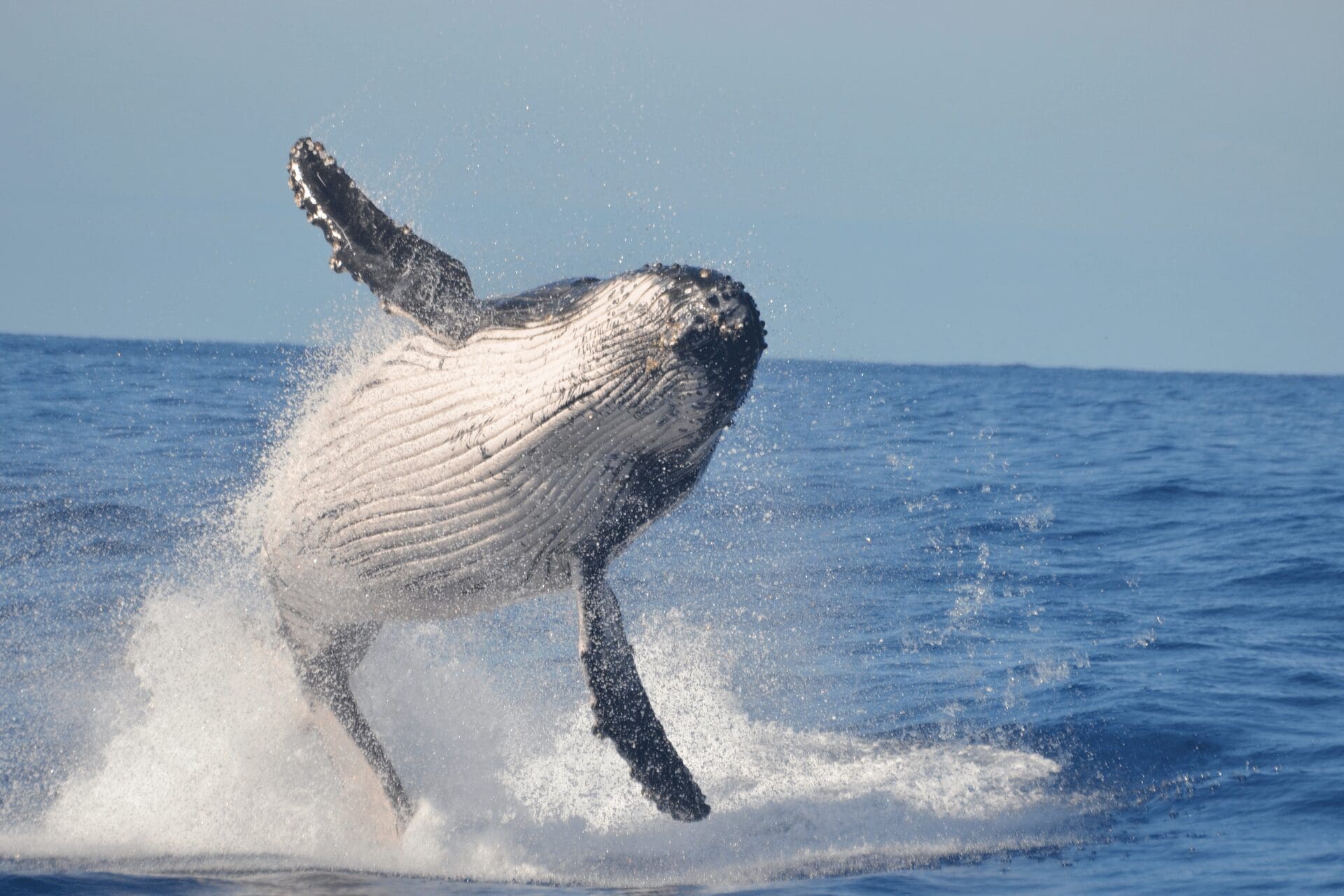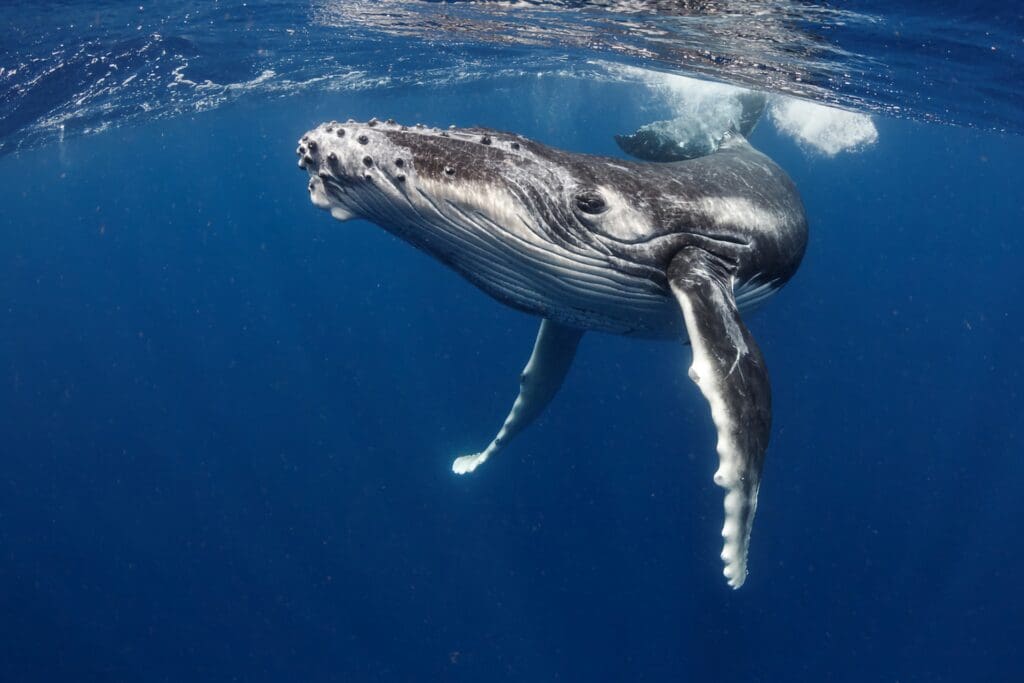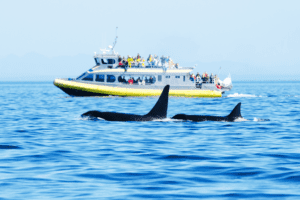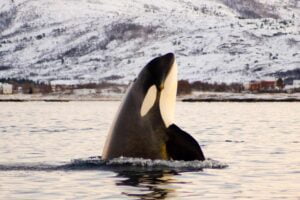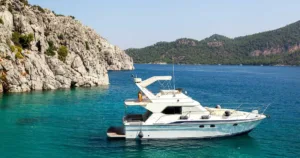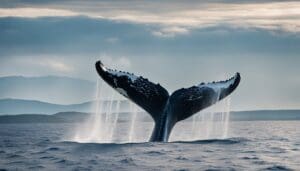Whale Watch Different Types and Experiences
Hello, friends! This post will explore all the different ways you can watch whales. Whether standing on the shore with binoculars, cruising on a boat, or even flying high in the sky, each experience is unique and thrilling.
We’ll also take a virtual tour around the globe, discovering the best spots for whale watching and what makes each location special.
| Whale-watching Type | Pros | Cons | Price Comparison |
|---|---|---|---|
| Land-Based | Easy accessibility Cost-effective Comfortable for those who prefer solid ground | Limited view Fewer species seen | Generally the cheapest; often free except for travel costs to the location |
| Boat-Based | Potential for close encounters Variety of species Educational guided tours | Risk of motion sickness Weather dependent Can be crowded | from $18 to $155 per person, depending on the duration of the tour and the operator |
| Aerial | Unique perspective Covers large areas Exciting flying experience | Higher cost Limited duration Greater environmental impact | 10-minute tour for $190 per person |
What Is Whale Watching?
Whale watching is like a treasure hunt on the high seas – you never know when you’ll spot a whale, and that’s a big part of the excitement!
Imagine you’re out on the water or standing on the shore, eyes scanning the horizon. Suddenly, there’s a splash, a whoosh, and a giant whale leaps into the air or sends a fountain of water shooting up with its blowhole.
That moment, that incredible sight, is what whale watching is all about.
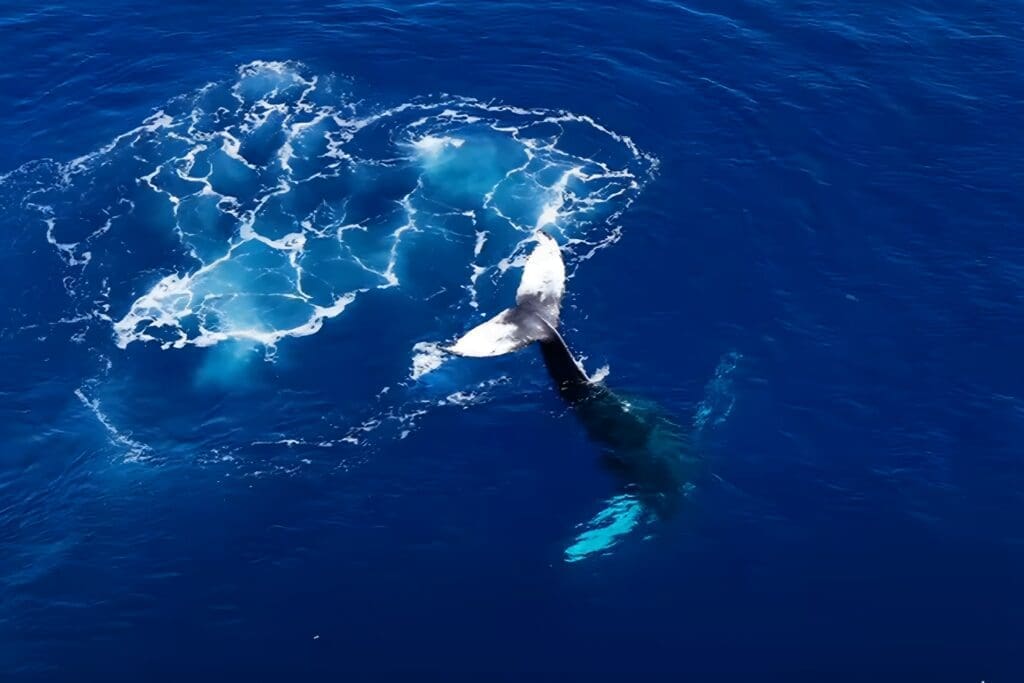
But it’s not just about seeing whales. It’s about connecting with nature in a big way. When you watch whales, you’re stepping into their world.
You get to see how they live, play, and splash around in the ocean. It’s a chance to learn about these amazing creatures and understand why they’re so important to our planet.
Whale watching is popular for many reasons. For some, it’s the thrill of the chase – the anticipation and excitement of spotting a whale in the wild. For others, watching these majestic animals glide gracefully through the water is a peaceful, almost magical experience.
And for everyone, it’s a unique adventure, a story you’ll want to share with your friends and family.
Historical Context and Evolution of Whale Watching
Humans have been spotting whales from shore lookouts and boats for thousands of years. But the official beginning of commercial whale watching is traced to 1955 in San Diego, California. Local fisherman began offering trips to observe the annual migration of California gray whales that swim astonishingly close to shore. Word quickly spread, and the nascent industry was born.
The 1960s and 70s saw whale watching expand to Cape Cod, Hawaii, and Australia, targeting humpbacks and right whales. By the 1980s, specially designed whale watch boats operated from countries worldwide as public fascination grew. The 1990s brought major advances in hydrophones and underwater video technology, allowing passengers to not just see but hear whales communicating.
Today, over 13 million people participate in whale watching tours annually across more than 119 countries. With sustainable practices, the eco-tourism boom has lowered demand for whale hunting while bringing significant economic stimulation. For example, nearly 5,000 jobs in Australia are supported by whale watching, generating over $28 million in yearly revenue. The global industry as a whole creates over 19,000 jobs and rakes in $2.1 billion per annum.
However, the surge in popularity has raised environmental concerns over the stress on whales from overcrowded boats. Many leading companies have initiated responsible guidelines, including slower speeds near whales and time limits viewing time. With conscientious stewardship by both captains and passengers committed to prioritizing the wellbeing of these marine giants, responsible whale watching promises to educate, inspire wonder, and foster conservation for generations to come.
Environmental Impact and Conservation Efforts
The rise of whale watching carries both advantages and concerns when it comes to ecological effects. Well-managed tourism can educate travelers and foster appreciation for marine wildlife while directly supporting conservation initiatives. However, interference from vessels and cumulative noise can disrupt feeding, breeding, and migration patterns when uncontrolled.
On the positive side, the growth of responsible whale watching has lowered the demand for consumable whale products. Generated revenue funds for protection programs tracking populations, rescuing stranded animals, and lobbying for expanded sanctuaries. Plus, witnessing whales in their habitat inspires visitors to advocate against pollution, overfishing, ship strikes, and climate change.
However, concentrated vessel activity produces underwater noise that makes it difficult for whales to communicate and navigate. Collisions with boats and entangling fishing gear cause injury and death. The cumulative stress threatens recovery, especially for endangered species like right whales, too narrow.
To mitigate detriments, many companies follow ethical guidelines limiting speeds and interaction times, plus contribute data on sightings and whale wellbeing. Governments continue establishing additional protected areas prohibiting encroachments along migration corridors. And conscientious tourists should select responsible operators, follow captain instructions, and report disturbances to authorities.
You can directly help whales thrive by getting involved with impactful global efforts like the Whale and Dolphin Conservation charity along with local habitat restoration and beach cleanup initiatives when you return from incredible sightings offshore. Together, through education, sustainable practices, and expanded ocean sanctuaries, we can secure the future for whales worldwide.
Types of Whale Watching
Land-Based Whale Watching
Imagine standing on the shore’s edge, eyes glued to the horizon, waiting for a splash or a glimpse of a whale’s tail. That’s land-based whale watching for you – it’s like a seaside safari!
You don’t even need to get your feet wet. The best part? It’s super accessible and often free. You can find fantastic spots along coastlines where whales pass close to shore.
Land-based whale watching is a popular way to observe whales and dolphins with almost no impact on the animals being watched. Many places worldwide feature fantastic cliff-top or shore-based viewpoints where resident groups of coastal dolphins, porpoises, or killer whales can be observed or where migratory species like right, humpback, or gray whales pass close to the coast, offering magnificent views.
Places like the cliffs of California or the rugged coasts of New England are prime spots for this type of whale watching. It’s a chill way to spot these giants, especially if you’re not keen on sailing the high seas.
Some countries even advertise whale routes that tourists can follow, linking shore-based whale-watching locations, such as the Cape Whale Route in South Africa.
Land-based whale watching is an optimal choice for those who suffer from sea sickness or want to be certain that they will not contribute to the disturbance of marine mammals.
This form of whale watching is part of a rapidly growing industry, estimated to generate over 2 billion US dollars and provide employment for over 13,000 people.
The cost of land-based whale watching can vary depending on the location and the operator, but it is generally more affordable than boat-based whale watching.
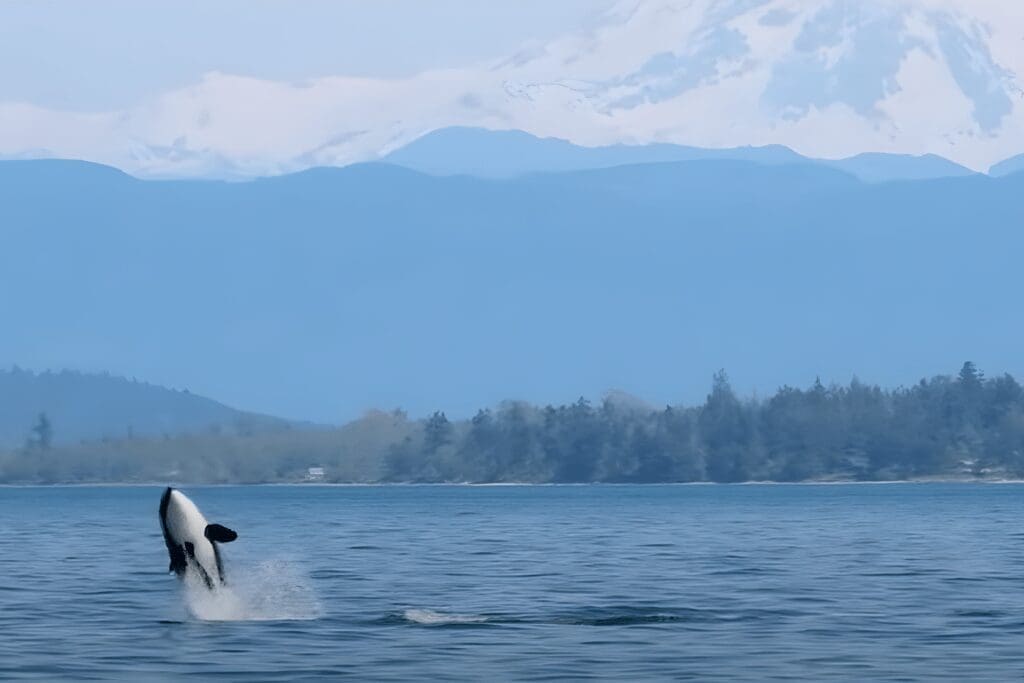
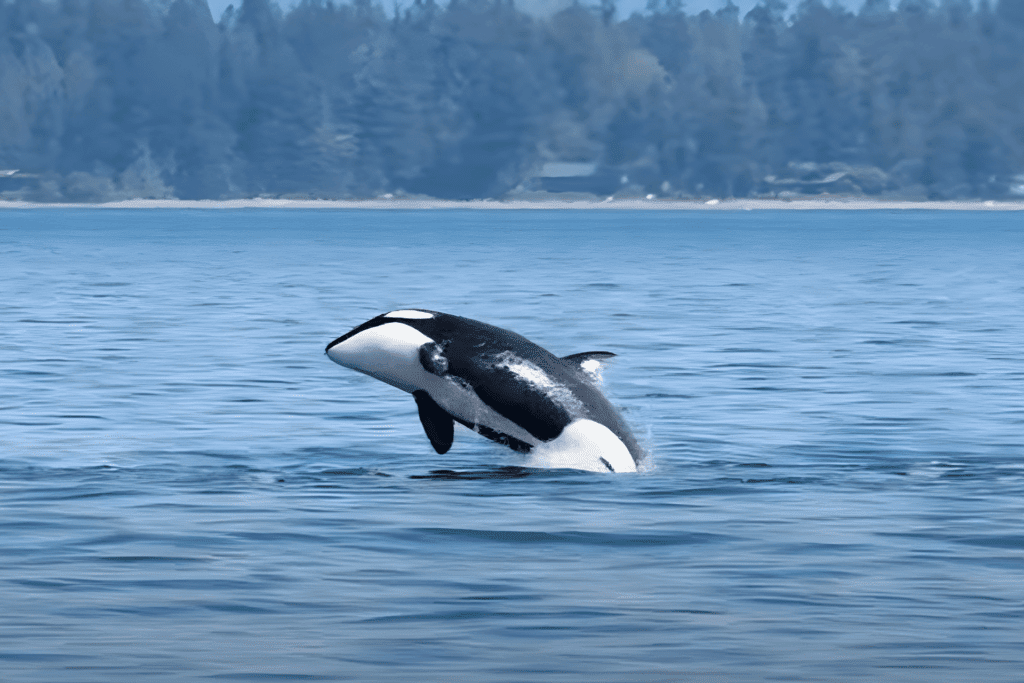
Boat-Based Whale Watching
If you’re up for a bit of adventure, boat-based whale watching is where it’s at. Picture yourself on a boat, the salty sea breeze in your hair, surrounded by the vast ocean.
You could be on a small, intimate tour with just a few other whale enthusiasts or on a larger boat with a crowd of fellow adventurers. Each offers a different vibe – the smaller boats provide a more personal experience, while the larger ones can feel like a big ocean party.
On these tours, you’re right in the whales’ world, up close and personal. It’s an exhilarating experience, feeling the waves and the whales swimming beside you.
Boat-based whale watching is the most common form of whale watching. Whale-watching boats can vary in size, from small zodiacs to larger vessels that can accommodate groups of various sizes.
Whale-watching boats are equipped with the latest electronics and staffed by experienced crews who can teach passengers how to spot the various creatures around them.
Boat-based whale-watching tours are available in many locations around the world.
Southern California, where whales, dolphins, sea lions, and more can be spotted year-round. In Hermanus, South Africa, boat-based whale-watching tours are available to maximize the chances of seeing whales.
Boat-based whale watching can provide a more intimate experience than land-based whale watching, allowing passengers to get closer to the whales and dolphins being observed.
However, it’s important to note that boat-based whale watching can have an impact on the whales and dolphins being watched, and regulations are in place in many locations to minimize disturbance and ensure a safe and respectful experience for both the animals and the passengers.
The prices for boat-based whale watching can vary depending on the location, tour duration, and the operator.
For example:
- In Cape Cod, Massachusetts, the price for a whale watching tour with Hyannis Whale Watcher Cruises starts at $75 for adults, $65 for senior citizens, and $55 for youths ages 4 to 12.
- In Long Island, New York, a whale watching tour with Long Island Whale and Seal Watching costs $99 per person.
- In Southern California, prices for boat-based whale-watching tours range from $18 to $155 per person, depending on the duration of the tour and the operator.
Aerial Whale Watching
Ever dreamed of flying like a bird and watching the world from above? Aerial whale watching gives you a bird’s eye view of whales! It’s like unlocking a new level in a video game, where you get to see the ocean and its inhabitants from a whole new perspective.
You soar over the sea in a small plane or helicopter, spotting whales as they swim and play below. It’s a unique and thrilling way to watch whales, offering views and photo opportunities you can’t get from land or sea. Plus, it’s a chance to feel like a high-flying explorer, discovering the ocean’s secrets from the sky!
While it offers the advantage of covering areas that may not be accessible by boat or visible from land, there are limitations to this approach. Whales can stay underwater for extended periods, making it challenging for planes to spot them.
Additionally, maintaining a respectful height to avoid disturbing wildlife from the air can make it difficult to see certain species, such as killer whales, unless water conditions are perfect.
Despite these challenges, aerial whale watching can provide a unique perspective and is considered an environmentally conscious way to observe whales from a distance.
However, it’s important to note that aerial whale watching may not be as effective as other methods due to the limitations mentioned. Boat-based and land-based whale watching are more common and offer different advantages, such as closer proximity to the whales and minimal animal impact.
The prices for aerial whale watching can vary depending on the location and the tour duration.
Seaplane Whale Watching in Long Beach, California, offers a 10-minute tour for $190 per person. However, it’s important to note that this is a unique and expensive experience.
Each type of whale watching offers its own unique set of thrills and experiences. Whether you’re standing on the shore, riding the waves, or soaring through the sky, a whale-watching adventure is perfect for you. So, let’s keep exploring and find out which style suits you best! 🌊🐋✈️🔭
The Most Common Species in Whale Watching
Whale watching allows you to spot incredible marine mammals in their natural habitat. Here are some of the majestic whale species you may be lucky enough to encounter:
Humpback Whales
- Characteristics: Known for their long pectoral fins and knobbly head, humpback whales can reach lengths of up to 60 feet. They are famous for their acrobatic breaches and complex songs.
- Behaviors: Humpbacks are curious about boats and known for breaching, tail-slapping, and singing. They often travel in pods, especially during migration.
- Best Times and Locations: Prime viewing is from April to October in regions like Alaska, Hawaii, and the east coast of Australia. In winter, they migrate to tropical waters for breeding.
Known for their haunting songs and impressive breaching displays, humpback whales routinely delight whale watchers. Adults can reach up to 60 feet long and weigh around 79,000 pounds. These energetic cetaceans slap their massive tail flukes and completely launch their bodies out of the water. The best times to see humpbacks are during their migration and breeding seasons, from December to March in Hawaii, January to March off Mexico’s Baja coast, and June to October off New England and Canada.
Gray Whales
- Characteristics: Gray whales have a mottled gray body and are often covered with parasites, giving them a rough appearance. They can reach up to 49 feet in length.
- Behaviors: Noted for their long migration, gray whales travel in groups and are known for spy-hopping (raising their head vertically out of the water).
- Best Times and Locations: The best time to see them is during their migration from the Bering Sea to Baja California from December to April.
At around 50 feet long, gray whales make epic 10,000-mile round trip migrations every year between breeding lagoons in Baja California, Mexico and frigid Arctic feeding grounds. From January through March, gray whales can be spotted in breeding lagoons with new calves. Watch for blow “heart-shaped” spouts up to 15 feet high. From March to June, spot northbound mothers with calves migrating closely along shorelines.
Blue Whales
- Characteristics: The largest animal on Earth, blue whales can grow up to 100 feet long. They have a long, slender body and are blue-gray in color.
- Behaviors: Blue whales are generally solitary and known for their loud, low-frequency calls. They feed primarily on krill.
- Best Times and Locations: Best seen in summer and fall off the coasts of California and Mexico. In the Indian Ocean, the waters around Sri Lanka are a good spot from December to April.
As the largest creatures on Earth ever, even dwarfing dinosaurs, witnessing a blue whale inspires awe. At about 100 feet long and upwards of 200 tons, these giants glide gracefully through the ocean, gathering tiny krill in their huge mouths. Blue whale populations off California peak from July through early fall. In Quebec’s Saguenay–St. Lawrence Marine Park, blues start arriving in late May or early June. Patient observers may glimpse rare spectacular displays as they lunge feed near the surface with their magnificent mottled blue bodies illuminated in the sunlight.
Orcas
- Characteristics: Orcas have a distinctive black-and-white coloring and a tall dorsal fin. They are highly intelligent and versatile predators.
- Behaviors: Known for their complex social structures, orcas live in pods and exhibit coordinated hunting strategies. They are also known for their playful behaviors.
- Best Times and Locations: Year-round in the Pacific Northwest, particularly around the San Juan Islands and British Columbia. In Norway, they can be seen in the winter months.
Also known as killer whales, orcas are actually the largest members of the dolphin family. These top ocean predators grow over 30 feet long and weigh up to 6 tons. Orcas are easy to identify by their distinctive black-and-white coloring. They use teamwork and intelligence to hunt prey ranging from salmon to great white sharks. Some of the best places to see orcas are the coastal waters of Washington and British Columbia from May to September, Norway year-round, and Argentina from September to November. Watch for dorsal fins slicing through the surface and spurting blows up to 6 feet high.
Minke Whales
- Characteristics: The smallest of the baleen whales, minkes are about 30 feet long. They have a pointed snout and a sleek body.
- Behaviors: Minke whales are fast swimmers and are often curious about boats. They are less likely to breach than other species.
- Best Times and Locations: Common in the North Atlantic and Pacific Oceans. In places like Iceland and Scotland, they can be seen in the summer months.
Despite growing nearly 30 feet long as adults, minke whales are famously difficult to spot since they are fast swimmers and spend little time at the water’s surface. But during the summer months off the Eastern seaboard of the U.S and Canada, as well as coastal regions of Scotland and Ireland, sightings increase. That’s because they are feasting on massive schools of bait fish. Though on the smaller side for baleen whales, minkes put on quite a show as they dart and weave while feeding, revealing their sleek black or gray backs. With a curiosity for boats, these whales may approach quite closely, offering you an extra special encounter.
Seasonal Variations in Whale Watching
How Different Seasons Affect Whale-Watching Experiences
Whale watching is a dynamic activity that changes with the seasons. Each season brings its own special moments and opportunities to witness the diverse behaviors of whales.
Spring: A Time of Awakening
- Northern Hemisphere: In regions like the North Atlantic and Pacific, spring is when many species, including humpbacks and gray whales, start migrating towards the poles. This is an excellent time to see them along coastlines.
- Southern Hemisphere: In places like Australia and South America, autumn is setting in, and you might catch the last of the whales before they migrate northward.
Summer: The Peak Season
- Northern Hemisphere: Summer offers the best whale watching in cooler areas like Alaska, Iceland, and Canada. Here, humpbacks, orcas, and even blue whales feed in the nutrient-rich waters.
- Southern Hemisphere: In regions like South Africa and New Zealand, winter sets in, attracting whales closer to the shore and making it a great time for land-based whale watching.
Autumn: Transition and Migration
- Northern Hemisphere: As the water cools, whales begin their journey to warmer breeding grounds. This is a great time to see them in places like the California coast, where blue and gray whales can be spotted.
- Southern Hemisphere: Spring arrives, bringing whales back to southern waters. In places like Argentina, you can witness mothers and calves close to the shore.
Winter: Breeding and Birthing
- Northern Hemisphere: Many whales migrate to tropical waters for breeding. Hawaii, Mexico, and the Caribbean become hotspots for humpback whale sightings.
- Southern Hemisphere: It’s summer in the southern part of the world, and places like Antarctica become alive with feeding whales, including minke and humpback whales.
Unique Seasonal Behaviors
- Breeding and Birthing: Winter and early spring are the best times to see mothers and calves, especially in breeding grounds like the lagoons of Baja California.
- Feeding Frenzies: During summer and autumn, in polar regions, you can witness spectacular feeding behaviors as whales take advantage of the abundant food.
- Migratory Patterns: The spring and autumn transition seasons are excellent for observing migration, where whales travel long distances, often passing close to shorelines.
Tips for Seasonal Whale Watching
- Check Local Patterns: Always research local whale-watching patterns, as they can vary greatly depending on the region.
- Plan for the Weather: Weather can be unpredictable, so plan accordingly, especially in transitional seasons.
- Be Flexible: Whale behavior is not guaranteed, so having a flexible schedule can increase your chances of a successful sighting.
Migration Patterns and Their Influence on Whale-Watching Opportunities
- Humpback Whales: These whales travel to tropical or subtropical waters for breeding and giving birth in winter, then return to polar waters for summer feeding. Prime viewing times are during their migrations along coastlines.
- Gray Whales: Known for one of the longest migrations of any mammal, gray whales travel from the Arctic to Mexico and back, offering fantastic viewing along the Pacific coast, particularly from Baja California in winter.
- Blue Whales: The largest animals on Earth, blue whales are often seen in areas like the California coast during summer and autumn. Their migration patterns are less predictable, but they tend to follow krill populations.
- Orca (Killer Whales): Orcas can be found in both polar and tropical waters, depending on the subspecies. In places like the Pacific Northwest, they’re resident year-round, while in other areas, their presence is more seasonal.
- Minke Whales: These smaller baleen whales are commonly seen in Arctic and Antarctic waters during summer months. In winter, they migrate to warmer waters, making them visible in regions like the Great Barrier Reef.
- Beluga Whales: Mostly found in Arctic and sub-Arctic waters, belugas don’t migrate long distances but do move seasonally in response to the retreat and advance of sea ice.
- Sperm Whales: Preferring deep waters, sperm whales are found in most of the world’s oceans. They are known to migrate seasonally, moving towards the poles in summer and returning to the equator in winter.
- Fin Whales: The second-largest whale species, fin whales migrate globally. They’re often seen in the Gulf of California and the Mediterranean Sea during certain times of the year.
- Bryde’s Whales: These whales are unique as they tend to stay in warmer waters year-round, making them a common sight in places like the Gulf of Thailand and the South Pacific.
Each species offers a unique whale-watching experience, influenced by their distinct migration patterns. By understanding these patterns, you can better plan your whale-watching trips to maximize your chances of encountering these magnificent creatures in their natural habitat. 🌍
Nighttime Whale Watching
Nighttime whale watching is an emerging trend that offers a unique and enchanting experience different from traditional daytime excursions. This section explores what makes whale watching at night so special and why it’s gaining popularity in certain locations worldwide.
The Allure of Nighttime Whale Watching
- Mystical Atmosphere: The ocean at night transforms into a mysterious and serene landscape, offering a completely different ambiance compared to the daytime. The quiet of the night sea, illuminated by moonlight, creates a magical setting for observing whales.
- Bioluminescence: In some regions, nighttime whale watching is enhanced by the natural phenomenon of bioluminescence. Microorganisms in the water light up, creating a glowing trail around the whales and other marine life, adding an ethereal quality to the experience.
- Different Behavioral Patterns: Some whale species are more active or exhibit different behaviors at night, offering a chance to observe unique aspects of their life that are not usually seen during the day.
Unique Locations for Nighttime Whale Watching
- Specialized Tours: Certain destinations have begun to offer specialized nighttime whale-watching tours. These tours have technology like underwater lights or night vision equipment to enhance the viewing experience.
- Ideal Spots: Places known for their calm, clear waters and minimal light pollution are ideal for nighttime whale watching. These conditions allow for better visibility and a more immersive experience with the marine environment.
What to Expect During a Nighttime Whale-Watching Tour
- Safety First: Nighttime tours prioritize safety, with experienced guides and well-equipped boats to navigate the darker conditions.
- A Different Perspective: Observing whales under the stars or moonlight offers a new perspective on these majestic creatures. The calm of the night often allows for a more intimate and reflective experience.
- Sensory Experience: Without the distractions of the daytime, other senses are heightened. The sound of a whale’s blow or the gentle swish of water becomes more pronounced, adding to the sensory experience.
Specialized Whale-Watching Tours
Specialized whale-watching tours offer unique experiences tailored to specific interests and purposes.
Themed Whale Watching Tours
- Photography Tours: These tours are designed for photography enthusiasts, offering guidance on capturing stunning images of whales. They often include expert photographers as guides and visit locations known for optimal lighting and whale activity.
- Research-Focused Tours: Participating in a research-focused tour allows enthusiasts to contribute to whale conservation. Marine biologists or researchers often lead these tours, providing insights into whale behavior, conservation status, and ongoing research projects.
- Eco-Tours: Eco-tours emphasize sustainable and responsible whale-watching practices. They educate participants about the marine ecosystem, the importance of conservation, and how to minimize human impact on these creatures.
Unique Experiences Offered by Specialized Tours
- Educational Insights: These tours often provide deeper knowledge about whales and their habitats, offering an educational experience that goes beyond just sighting these magnificent creatures.
- Interactive Elements: Many specialized tours include interactive elements like using hydrophones to listen to whale songs or participating in data collection for research.
- Personalized Experience: Specialized tours are typically smaller and more personalized, allowing for a more intimate and tailored whale-watching experience.
Benefits of Choosing Specialized Tours
- Supporting Conservation: By choosing tours focusing on research and eco-friendly practices, participants contribute to the conservation and understanding of whale populations.
- Enhanced Engagement: These tours offer more than just sightseeing; they provide an opportunity to engage with the subject matter on a deeper level, whether it’s through photography, science, or environmental education.
- Unique Perspectives: Each type of specialized tour offers a unique perspective on whale watching, making each trip a distinct and memorable experience.
Choosing the Right Whale-Watching Experience
Here’s a guide to help you make an informed decision and ensure a responsible and enjoyable whale-watching tour.
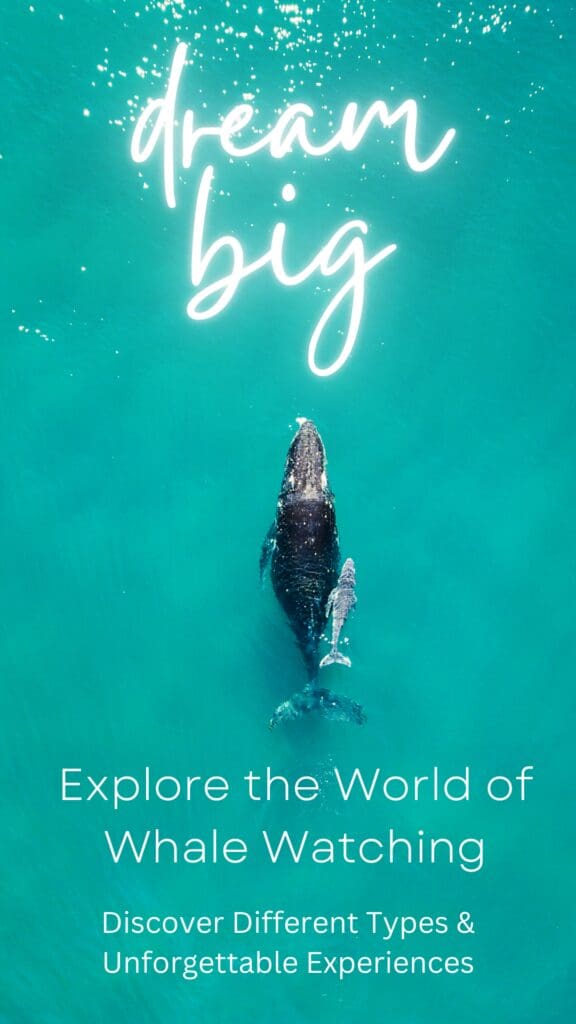
Factors to Consider
- Personal Interests: Are you looking for an educational, adventurous, or relaxing experience? Your interests will guide your choice – whether it’s a research-focused tour, a photography expedition, or a leisurely cruise.
- Location: Different locations offer different types of whale-watching experiences. Research the species commonly seen in the area and the best times to spot them.
- Type of Experience: Do you prefer a large, cruise-style tour or a more intimate setting on a smaller boat? Consider the type of vessel, the size of the group, and the duration of the tour.
Tips for Selecting a Responsible and Enjoyable Tour
- Check Reviews and Credentials: Look for tour operators with positive reviews and good safety records. Ensure they are licensed and follow local regulations and conservation guidelines.
- Eco-Friendly Practices: Choose operators committed to sustainable practices. Responsible tours respect wildlife, avoid disturbing natural behaviors, and educate guests about conservation.
- Expertise on Board: Opt for tours that provide knowledgeable guides or naturalists who can offer insights into whale behavior, habitat, and conservation efforts.
- Comfort and Safety: Ensure the tour operator prioritizes safety and comfort, especially if you’re prone to seasickness or have specific needs.
- Ask Questions: Don’t hesitate to ask the operator about their practices, the likelihood of sightings, what to expect, and what is included in the tour.
- Prepare for the Weather: Check the weather forecast and dress accordingly. Layers, sun protection, and waterproof gear are often recommended.
- Camera and Binoculars: Bring a camera for photos and binoculars for a closer view, especially if you’re on a larger boat or watching from land.
Making the Most of Your Experience
- Be Open to Surprises: Whale watching can be unpredictable. Enjoy the experience, even if it doesn’t go exactly as planned.
- Respect the Whales: Remember, you’re a visitor in their natural habitat. Respect their space and avoid causing any disturbance.
- Engage and Learn: Use this opportunity to learn about these magnificent creatures and the importance of preserving their environment.
Conclusion
Whale watching is more than just an activity; it’s a doorway to diverse and unforgettable experiences. Whether you’re on land, aboard a boat, or soaring in the sky, each method offers a unique perspective on these majestic sea creatures. From the thrill of spotting whales in their natural habitat to the specialized insights of themed tours, there’s a whale-watching adventure for every interest and location.
Remember, the key is to choose responsibly, respecting the whales and their environment. As you embark on this journey, embrace the opportunity to connect with nature and join a community that cherishes and protects these gentle giants. Whale watching isn’t just about seeing whales; it’s about immersing yourself in an awe-inspiring world and creating memories that last a lifetime. 🐋🌊🌏
Resource List for Whale Enthusiasts
Whether you’re a budding marine biologist, a whale watching enthusiast, or simply curious about these magnificent creatures, the following resources offer a wealth of information on whale conservation, scientific research, and general knowledge about whales and marine life.
Whale Conservation Organizations
- World Wildlife Fund (WWF) - Whales: WWF - Whales
- A leading organization in wildlife conservation and endangered species, offering extensive information on whale conservation efforts.
- International Whaling Commission (IWC): International Whaling Commission
- An international body responsible for the conservation of whales and the management of whaling.
- Whale and Dolphin Conservation (WDC): Whale and Dolphin Conservation
- Dedicated to the protection of whales and dolphins, providing insights into various species and their conservation status.
Scientific Research on Whales
- Marine Mammal Science Journal: Marine Mammal Science
- A leading journal publishing original research on the biology and ecology of marine mammals.
- NOAA Fisheries - Marine Mammal Science: NOAA Fisheries
- Offers a range of scientific resources and research papers on marine mammals.
- Journal of Cetacean Research and Management: Journal of Cetacean Research
- Focuses on the study of whales, dolphins, and porpoises, including their conservation and management.
Books on Whales and Marine Life
- “The Whale: In Search of the Giants of the Sea” by Philip Hoare
- An engaging journey into the world of whales, blending history, science, and personal experiences.
- “Whales, Dolphins, and Porpoises: A Natural History and Species Guide” by Annalisa Berta
- A comprehensive guide to the biology and ecology of cetaceans.
- “The Cultural Lives of Whales and Dolphins” by Hal Whitehead and Luke Rendell
- Explores the complex social and cultural behaviors of whales and dolphins.
Documentaries on Whales
- “Blackfish” (2013)
- A critical look at the consequences of keeping orcas in captivity, focusing on the story of Tilikum, an orca held by SeaWorld.
- “The Whale” (2011)
- The heartwarming story of Luna, a young orca separated from his family in a fjord on the coast of British Columbia.
- “Blue Planet II” (2017) - BBC Series
- This landmark series explores the world’s oceans, including captivating episodes on marine mammals.

